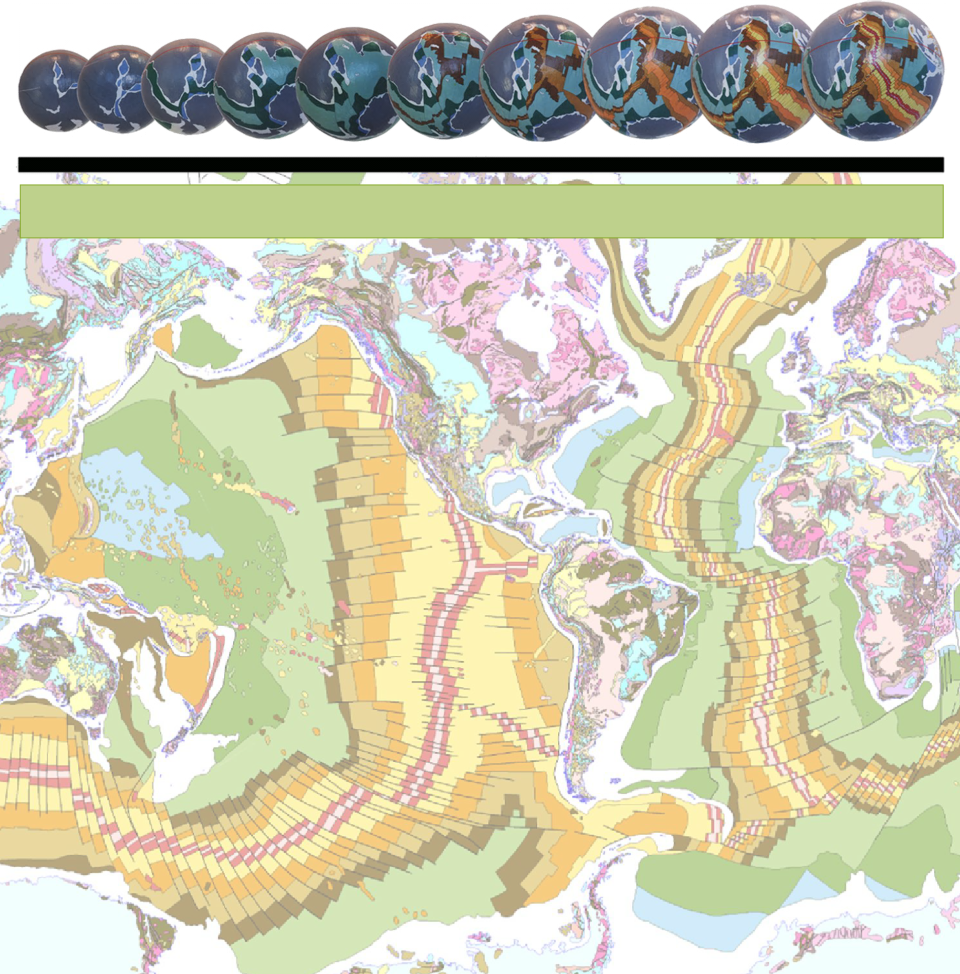

WHO SAID THE EARTH IS NOT EXPANDING?
There are very few positive things said about Earth Expansion theory in the literature today, in particular since the advent of modern mass communication with all its inherited plagiarism. To the untrained eye it is very easy to simply take for granted that the Earth Expansion theory has been adequately tested and adequately rejected in favour of plate tectonics. I can assure the reader that if you place a posting about Earth Expansion on Wikipedia, for instance, it is mysteriously removed within 24 hours. So who is doing this, who said the Earth is not expanding, and why?
There are a lot of seemingly well-
In 1973 Hallam stated that “…the evidence for plate tectonics is immense, and the quality of the science has improved immeasurably since earlier in the century when continental drift was generally dismissed out of hand, often on questionable grounds, if not through downright prejudice”. In the introduction to his book on Phanerozoic biogeography in 1994 Hallam made a further emotive appeal to his readers, enforcing his strong views on plate tectonics while dismissing potential alternatives. “Some biogeographers, he stated …may object to geologists 'laying down the law' about what is scientifically acceptable among competing historical interpretations… However, this would be to misconstrue the significance of the revolution in the Earth sciences that took place a quarter of a century ago. He then further appealed to biogeographers “…to respect this fundamental change, and the solidity of the general outlines of geological history that have since been worked out, just as palaeontologists must make sure that their own hypotheses are biologically plausible”.
It is interesting to note from Hallam’s emotive statements that, when it comes to acceptable science, early failings are “…generally dismissed out of hand, often on questionable grounds, if not through downright prejudice”. Yet, when plate tectonic science is challenged he insists that we must simply stand by and “…respect this fundamental change and the solidity of the general outlines of geological history that have since been worked out”. Contrary to Hallam’s stance Holmes, in 1978, further reminded us that the way in which “…ideas about continental drift were kept alive by only a small minority of geologists, is an emphatic reminder not to discard hypotheses lightly”. And this, of course, is equally applicable to the theory of Expansion Tectonics.
This emotive disrespect for proper science was not limited to continental drift, with Earth expansion continuing to be “…dismissed out of hand. It should be said at once that consensus of opinion is against expansion of the Earth being an explanation of sea-
Emotive rejection of the theory of Expansion Tectonics continues to this day to be dismissed “…on questionable grounds. It appears that so long as the Earth has had its present mass, changes of external radius are limited to amounts of the order of 100 km” (Birch, 1968). “Studies of climate and biozoologic zones of the Mesozoic and Cenozoic show that expansion has not taken place” (Meyerhoff & Meyerhoff, 1974). “From both quantitative and qualitative arguments, significant Earth expansion since the Late Palaeozoic is unlikely” (Schmidt & Clark, 1980). “Rapid, post-
It was also said that “Results from the Moon seem to limit a decrease in the gravitational constant over the last 4 Ga to <2x10-
While some of the arguments used to question the validity of Earth Expansion were considered valid at the time, it should be noted that the quality of modern scientific data has definitely …improved immeasurably since earlier in the [20th] century. Most modern evidence has been gathered in support of plate tectonics, however, this new evidence is increasingly demonstrating the limitations of plate tectonics. As is shown in this website, in Archaean to Recent Expansion Tectonic small Earth modelling studies, research shows that all continental plates, inclusive of cratonic, orogenic, and sedimentary basins, have retained spatial integrity throughout geologic history. Exactly what the biogeographers, and Shields (1998), have been telling us. As Shields in 1997 so astutely maintains, “…Ultimately world reconstructions must be congruent not only with the data from geology and geophysics, but also with palaeobiogeography, palaeoclimatology, and palaeogeography”.
Expansion Tectonic research nullifies much of the mythical and misconceived arguments that have perpetuated in the literature by misguided authors, and demonstrates a need to resolve the question scientifically, once and for all, whether Expansion Tectonics is, in fact, a viable alternative to plate tectonics.